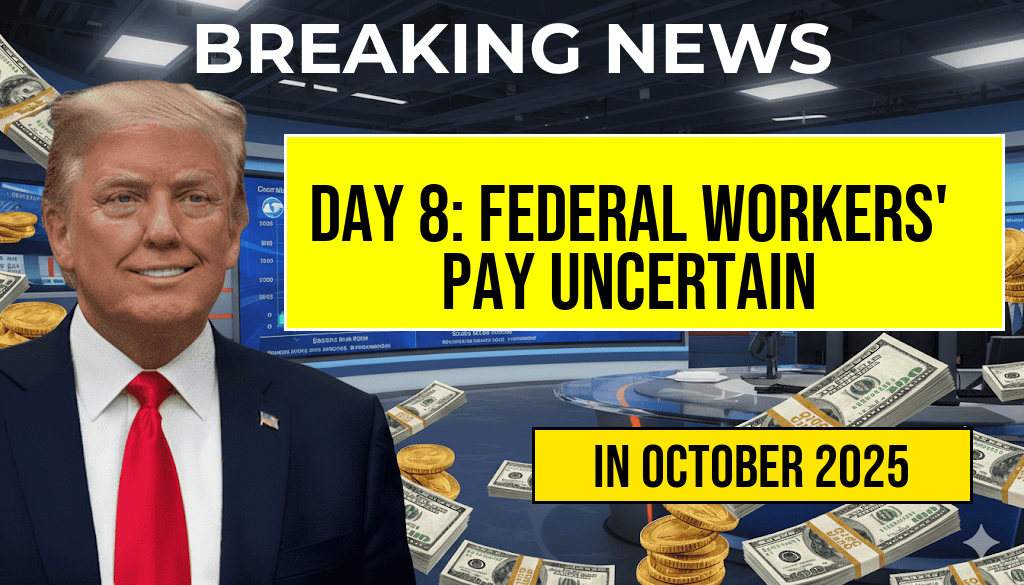As the federal government enters the eighth day of a shutdown, questions loom over the financial stability of federal workers. With many government offices closed, federal employees find themselves in a precarious situation regarding their paychecks. As of now, reports indicate that thousands of federal workers are facing the possibility of receiving $0 in pay for the duration of the shutdown. However, uncertainties persist about whether they will ultimately receive full compensation once the government reopens. The situation is rapidly evolving, with various stakeholders weighing in on the potential impact of the shutdown on federal employees.
Current Status of Federal Employee Compensation
The ongoing shutdown has left federal workers in a state of limbo. While some essential services continue to operate, many federal employees have been furloughed, meaning they are not working and therefore not earning pay. According to the Office of Personnel Management (OPM), employees who are deemed non-essential are affected the most. In contrast, essential workers, such as those in national security and law enforcement, are required to work but may also face delayed compensation.
Expected Pay Consequences
As the shutdown drags on, the immediate concern for many federal workers is the uncertainty of their financial situation. Here are the key points regarding pay during the shutdown:
- Furloughed Workers: Employees who are furloughed will not receive a paycheck during the shutdown period. This can create significant financial strain, particularly for those who live paycheck to paycheck.
- Essential Employees: Those who are required to work during the shutdown are technically considered “excepted” employees. They will continue to work but may not receive immediate pay until the government reopens.
- Back Pay Legislation: Historically, Congress has approved back pay for federal workers after previous shutdowns, but there is no guarantee this will happen again. The uncertainty is causing anxiety among workers and their families.
Historical Context of Federal Shutdowns
Understanding the implications of the current shutdown requires a look back at previous instances. Federal shutdowns have occurred sporadically over the last several decades, often resulting in similar concerns regarding employee compensation. The longest shutdown in U.S. history lasted 35 days from late 2018 to early 2019, affecting approximately 800,000 federal employees.
| Year | Duration | Impact on Employees |
|---|---|---|
| 1995-1996 | 21 days | Furloughs and back pay provided |
| 2013 | 16 days | Furloughs and back pay provided |
| 2018-2019 | 35 days | Furloughs and back pay provided |
Public and Government Reactions
Public sentiment surrounding the shutdown has ranged from frustration to empathy for federal workers. Advocacy groups have rallied to support affected employees, urging lawmakers to prioritize their needs as part of any resolution. Meanwhile, some members of Congress have voiced their commitment to ensuring federal employees do not suffer financial hardships due to the shutdown.
Potential Solutions on the Horizon
As discussions continue in Congress, several proposals have emerged aimed at ending the shutdown and alleviating the financial strain on federal employees. Some key proposals include:
- Short-Term Funding Bills: These bills aim to provide immediate funding to reopen government agencies temporarily.
- Long-Term Budget Negotiations: Lawmakers are being urged to engage in bipartisan discussions to address the underlying budgetary issues that lead to shutdowns.
- Employee Compensation Guarantees: Some legislators are advocating for legislation that guarantees back pay for all federal workers affected by the shutdown.
The ongoing shutdown raises critical questions about the future of federal employment and the financial security of thousands of workers. As lawmakers continue to negotiate, the hope is that a resolution will come soon, allowing federal employees to return to work and receive the compensation they deserve.
For more information on the implications of government shutdowns and their effects on federal workers, visit OPM.gov or explore articles on Forbes.
Frequently Asked Questions
What is the current status of federal workers’ pay during the shutdown?
As of Day 8 of the shutdown, many federal workers are facing the possibility of receiving $0 pay for their services, while some may be receiving full compensation depending on their employment status and the specific provisions of the shutdown.
Are all federal employees affected by the shutdown equally?
No, not all federal employees are affected equally. Some may continue to receive their full salaries while others, particularly those deemed non-essential, may experience delays in their pay.
What options do federal workers have if they are not receiving pay?
Federal workers not receiving pay can explore options such as applying for unemployment benefits, seeking temporary employment, or utilizing savings to manage their finances during the shutdown.
Will federal workers receive back pay after the shutdown ends?
Yes, it is common practice for federal workers to receive back pay once the shutdown concludes, although this can depend on the specific circumstances and legislation passed during the shutdown period.
How can federal workers stay informed about their pay status during the shutdown?
Federal workers can stay informed by regularly checking official government communications, visiting their agency’s website, and following updates from labor unions or employee advocacy groups regarding pay and benefits during the shutdown.

Leave a Reply